Machine learning is a powerful tool that's transforming industries by enabling computers to learn from data and make decisions. There are two main techniques: supervised learning, which trains a model on known input and output data and predicts outputs, and unsupervised learning, a self-teacher which finds hidden patterns in input data on itself. These two approaches are fundamental to how machines understand and interpret data.
Image Source: https://www.mathworks.com/help/stats/machine-learning-in-matlab.html
Supervised vs. Unsupervised Learning:
Imagine you're a teacher with a classroom full of eager students. Your job is to guide them through their learning journey, helping them make sense of new concepts, and correcting their mistakes along the way. Now, think of supervised learning as a teacher-student relationship, where the teacher (in this case, you) provides labelled examples to help students (in this case, the machine) learn. On the other hand, unsupervised learning is like a group of students left on their own to figure things out, with no teacher to guide them, just their curiosity and observation.
Supervised Learning: The Guided Path
Supervised learning is like painting by numbers. You have a clear outline (the labels), and your job is to fill in the colours (the predictions). The "teacher" here is the dataset that comes with labelled examples. Each example consists of input data (features) and the corresponding correct output (label).
Imagine you're training a machine to recognise pictures of cats and dogs. You show it thousands of pictures, each labelled as either "cat" or "dog." The machine learns the patterns associated with each label and over time, gets better at distinguishing between the two. The key is that the machine has clear guidance, it knows what the correct answer is for each picture it sees during training.
Image Source: Bot Penguin
Supervised learning is powerful when you have a lot of labelled data and a clear idea of what you want the machine to learn. It's used in tasks like:
Spam detection: Classifying emails as spam or not.
Speech recognition: Converting spoken language into text.
Credit scoring: Predicting the likelihood of a loan being repaid.
The beauty of supervised learning is that it's like a well-tuned engine, once trained, it can make predictions with high accuracy. However, it relies heavily on the quality and quantity of labelled data.
Unsupervised Learning: The Self-Taught Explorer
Imagine a naturally curious child exploring a toy store for the first time. No one tells him what each toy is called or how to play with it. He will want to figure it out on his own by grouping similar toys together or discovering patterns in how the toys are organised. This is unsupervised learning.
Image Source: GeeksforGeeks
In unsupervised learning, there are no labels or correct answers given during training. The machine is left to its own devices to find patterns and relationships in the data. It's like giving the machine a puzzle without showing it the picture on the box, it has to figure out what the picture looks like on its own.
For example, imagine you have a dataset of customer purchase history, but no labels to indicate what kind of customer each one is. You can use unsupervised learning to cluster the customers into groups based on their buying behaviour. Maybe you'll discover that one group likes to buy luxury items, while another is more budget-conscious.
Unsupervised learning shines in situations where you have a lot of data but no labels. It's commonly used for:
Customer segmentation: Grouping customers with similar behaviours for targeted marketing.
Anomaly detection: Identifying unusual patterns in data, like fraudulent transactions.
Dimensionality reduction: Simplifying data without losing important information, making it easier to visualise or process.
The challenge with unsupervised learning is that it's more of an open-ended journey. Since there are no labels to guide the machine, the results can be more unpredictable and harder to evaluate. But that unpredictability is also where the magic happens, unsupervised learning can uncover hidden insights that you might not have even thought to look for.
Finding the Right Balance
So, which approach should you use? It depends on your goals and the data you have. If you have a clear objective and labelled data, supervised learning is your go-to. It's like having a map and a destination, you'll get there efficiently. But if you're exploring new territory and looking for insights in uncharted data, unsupervised learning is your compass. It might take longer to find your way, but you could discover something truly unexpected.
In the end, supervised and unsupervised learning are two sides of the same coin. They're tools that help us make sense of the world through data, each with its strengths and challenges. Whether you're guiding the machine with labelled examples or letting it explore on its own, the goal is the same, to turn raw data into knowledge and, ultimately, into action.
So next time you're faced with a machine learning problem, ask yourself: Do I need a teacher, or do I want the machine to be the explorer? The answer will guide you to the right path.









0 Comments